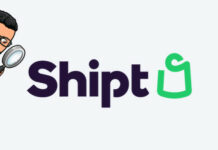A virtual data room (also “VDR” or “electronic data room”) is a secure online space that acts as a repository for company documents and allows users to share important business information with customers, investors, and company management over the Internet in a controlled environment.
Virtual transaction rooms are often used during the due diligence phase as a place to store and share thousands of documents with different teams such as potential buyers and sellers. In many cases, a virtual data room is the best and the most convenient tool for due diligence during mergers and acquisitions.
You can read more about how this software can help with business processes at the M&A community site https://mnacommunity.com/ and then choose the most suitable provider.
M&A
M&A due diligence is a common use case for VDRs. The merger or acquisition of other companies requires a lot of research, especially the delivery and verification of quantities and quantities of documents. Companies can find it difficult to provide the sensitive data they are asked for. But with VDR software they can continue to participate in negotiations and share valuable confidential data securely by relying on a specially designed data room. And if the transaction is not completed, access to the data room can be easily revoked.
Every business strategy needs some tools for its implementation whether you produce and manufacture products or provide services. Establishing and maintaining these business relationships requires contracts and frequent data transfers. Virtual data rooms ensure the storage of these data and provide easily accessible documents required for further cooperation. For example, changes in the file immediately become available to all contractors involved in the project.
Auditing corporate practices, compliance and reporting is common practice in all organizations. The process is often challenging as employees must interact with external regulators and supervisors. Many companies have offices in remote locations and around the world in different time zones and need a secure tool for team cooperation.
The use of a virtual m&a data room enables lawyers, auditors, internal and external regulators, and other interested parties to have a single point of access. Deploying a central system reduces errors and time for routine work. In addition, it ensures transparency in communication.
Offering an initial public offering (IPO) is a complex task that requires an unimaginable amount of paperwork. As with an audit, transparency is important. Businesses need to create, share, store and manage large volumes of documents. The owners can manage access levels and permissions. Due to the nature of the transaction, they can allow users limited access, for example, “show only”, copying, forwarding, or printing may be prohibited.
The Role of Due Diligence in Mergers and Acquisitions
Due diligence enables the buyer in the M&A process to confirm previously undisclosed information about the selling company’s financial results, contracts, employees, and customers. In other words, it allows the buyer to get a complete picture of the company they are acquiring.
Prepare for Due Diligence
Jordan Lampos, director of mergers and acquisitions at Duff & Phelps, believes that the earlier your transaction due diligence begins, the better.
This means creating a comprehensive checklist of documents required by both parties to the transaction and agreeing on who is responsible for each element of due diligence.
Anything you Need to Ask
There are no stupid questions when it comes to due diligence. You can ask anything you want to know about the company. Here are some points that are good to know before mergers & acquisitions:
-
Financial Information.
- Balance
- Account Information/Policies
- Accounts Payable / Policy Information
- Tax returns (usually for the last three years)
- Reports showing the value of all products
- Gross profit data
- Tax Refund
- Invoice verification and proof of income
- List of all tangible assets
- List of expenses (fixed and variable)
-
Company Information
- Detailed overview of a company structure (graphs and charts are helpful)
- Company statute
- Real Estate Information
- Information about Shareholders
- List of commissioned work/collaborators – freelancers, consultants, etc.
- Overview of the main competitors
-
Product Information
- Lists of services and products
- Past and projected growth rates, etc.
Conclusion
The process of mergers and acquisitions is always very time-consuming and requires extreme attention, good preparation, and effective implementation tools. Virtual data rooms are the software that helps to follow M&A strategies allowing secure interaction between all participants of the process, protected storage, and sharing of confidential information. Then there will be much less cause for concern.



